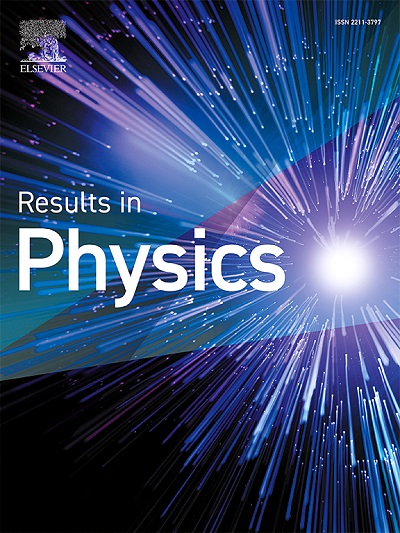H2S gas sensor based on Weyl semimetal and 1D porous silicon photonic crystal
IF 4.4
2区 物理与天体物理
Q2 MATERIALS SCIENCE, MULTIDISCIPLINARY
引用次数: 0
Abstract
Hydrogen sulfide (H2S) is a highly toxic and hazardous gas commonly found in refineries, petroleum, and natural gas environments. It is also explosive and heavier than air. We present a gas sensor designed to detect H2S in varying concentrations using a Weyl semimetal (WSM) combined with a one-dimensional porous silicon photonic crystal (PSi-1DPC). In our sensor, the gas is contained in the cavity formed between the WSM layer, which serves as a plasmonic material, and the PSi-1DPC. The sensor utilizes Tamm plasmon polaritons (TPPs) generated at the interface of the WSM and PSi-1DPC to detect minute changes in H2S concentration. We investigate the impact of the geometrical parameters of the sensor and the intrinsic characteristics of the WSM layer on its efficiency to identify the optimal structure. Our results indicate that the proposed sensor operates effectively in both transverse electric (TE) and transverse magnetic (TM) modes, with higher efficiency observed in the TE mode. The sensor achieves a maximum sensitivity of 152.980 µm/RIU, a figure of merit of 1/RIU, and a limit of detection of RIU. Therefore, employing the WSM layer as a plasmonic material to excite the TPP modes presents a promising solution for the highly sensitive and accurate detection of H2S gas in related industries.
求助全文
约1分钟内获得全文
求助全文
来源期刊

Results in Physics
MATERIALS SCIENCE, MULTIDISCIPLINARYPHYSIC-PHYSICS, MULTIDISCIPLINARY
CiteScore
8.70
自引率
9.40%
发文量
754
审稿时长
50 days
期刊介绍:
Results in Physics is an open access journal offering authors the opportunity to publish in all fundamental and interdisciplinary areas of physics, materials science, and applied physics. Papers of a theoretical, computational, and experimental nature are all welcome. Results in Physics accepts papers that are scientifically sound, technically correct and provide valuable new knowledge to the physics community. Topics such as three-dimensional flow and magnetohydrodynamics are not within the scope of Results in Physics.
Results in Physics welcomes three types of papers:
1. Full research papers
2. Microarticles: very short papers, no longer than two pages. They may consist of a single, but well-described piece of information, such as:
- Data and/or a plot plus a description
- Description of a new method or instrumentation
- Negative results
- Concept or design study
3. Letters to the Editor: Letters discussing a recent article published in Results in Physics are welcome. These are objective, constructive, or educational critiques of papers published in Results in Physics. Accepted letters will be sent to the author of the original paper for a response. Each letter and response is published together. Letters should be received within 8 weeks of the article''s publication. They should not exceed 750 words of text and 10 references.
 求助内容:
求助内容: 应助结果提醒方式:
应助结果提醒方式:


